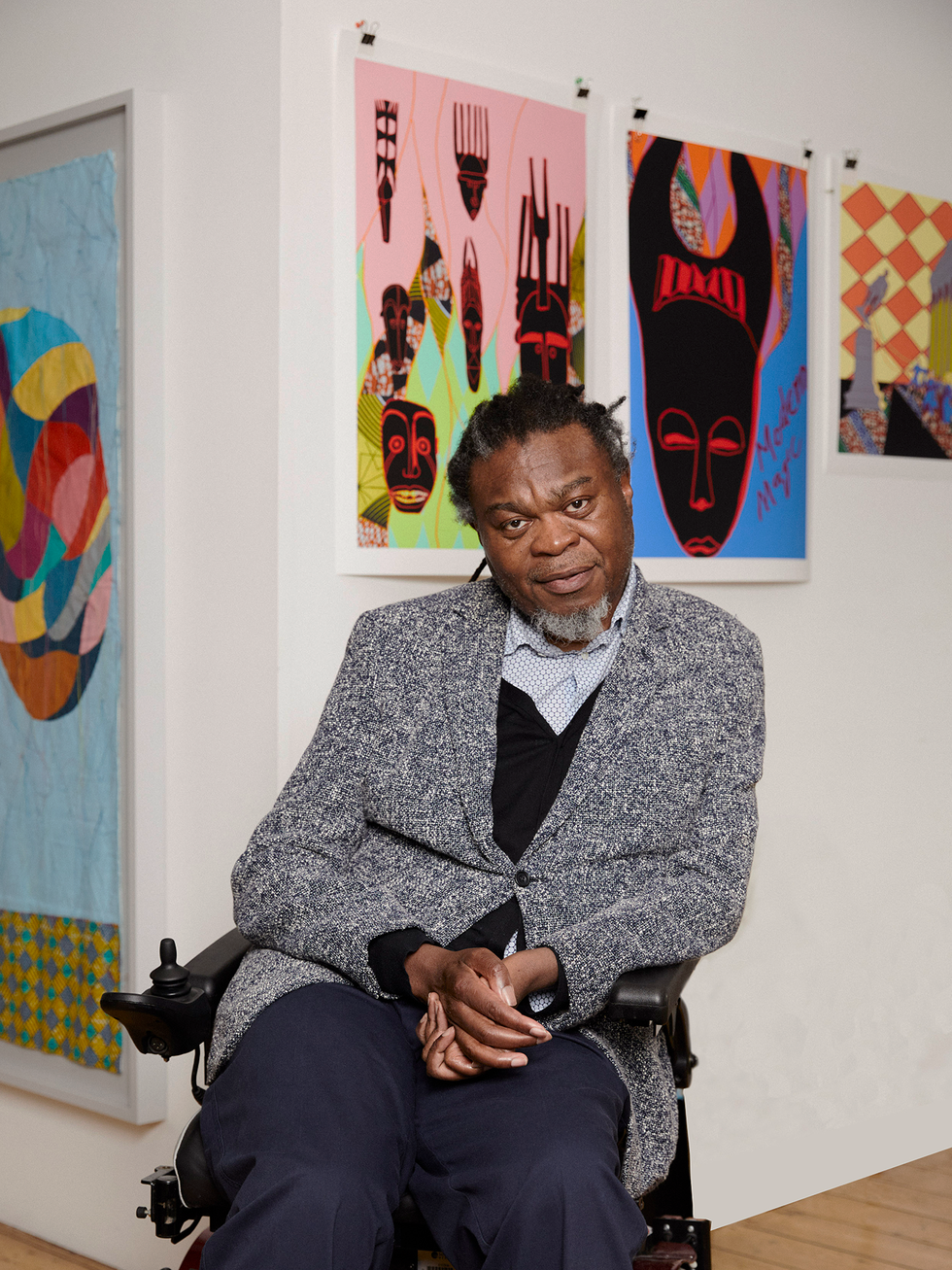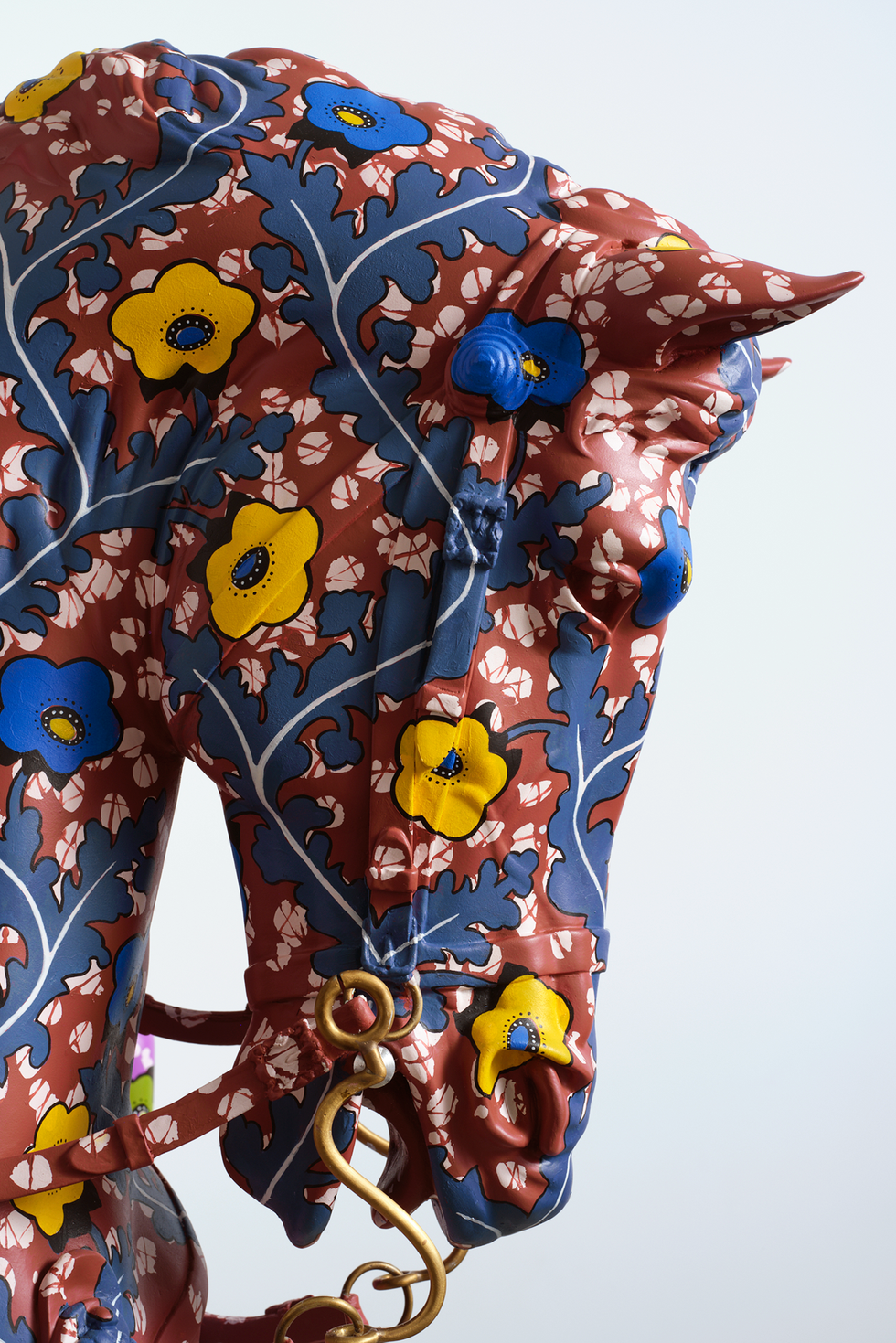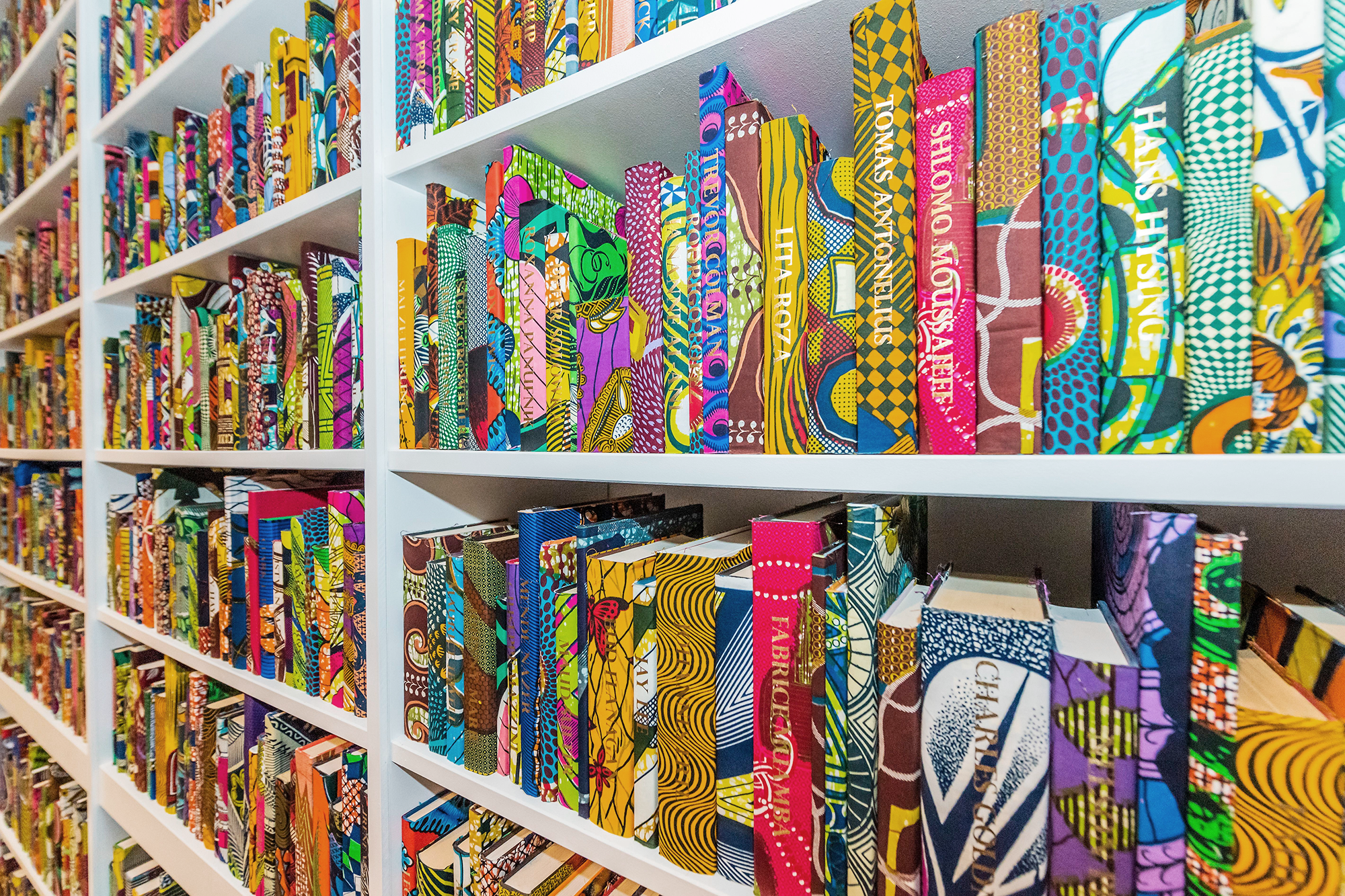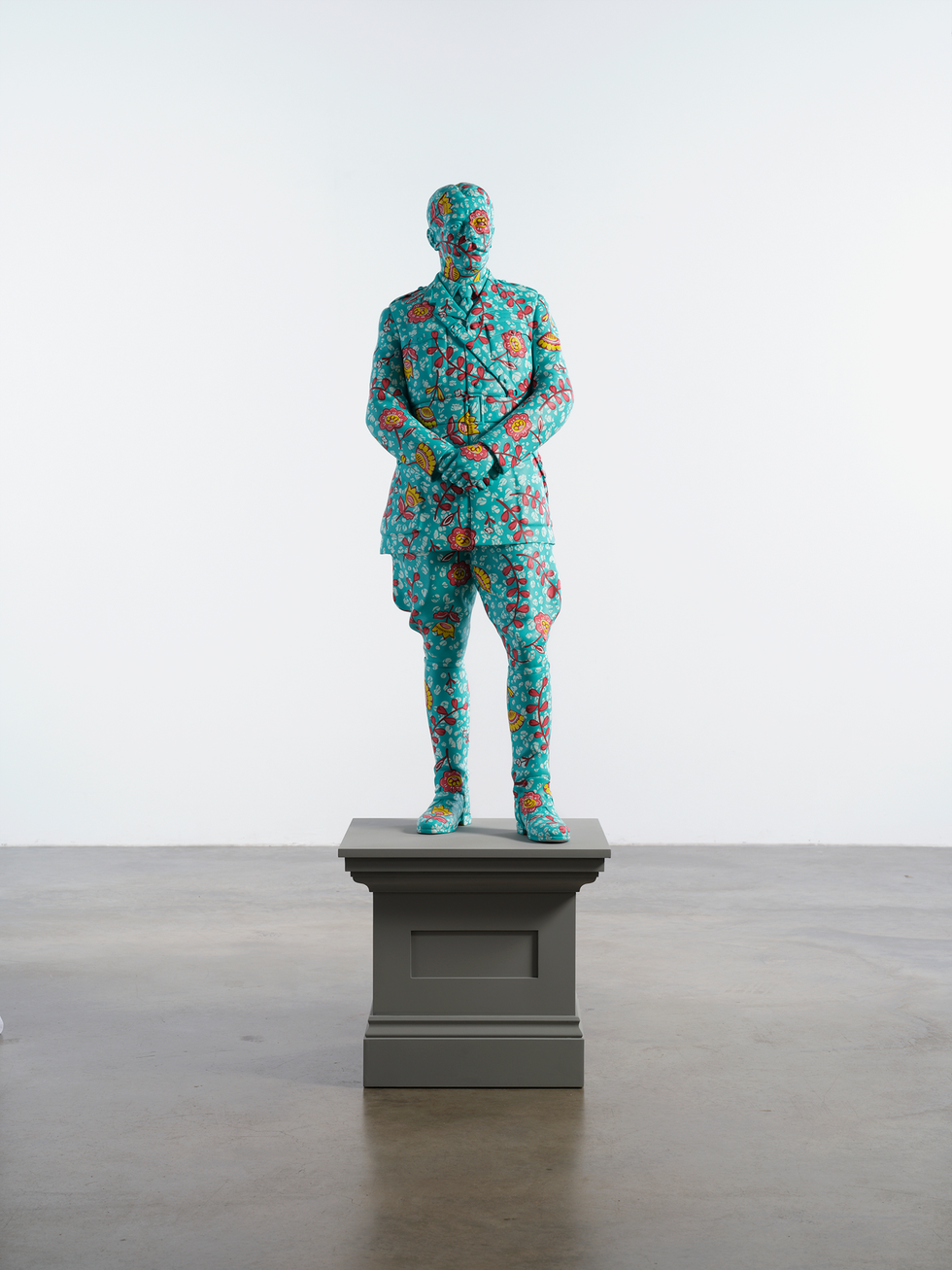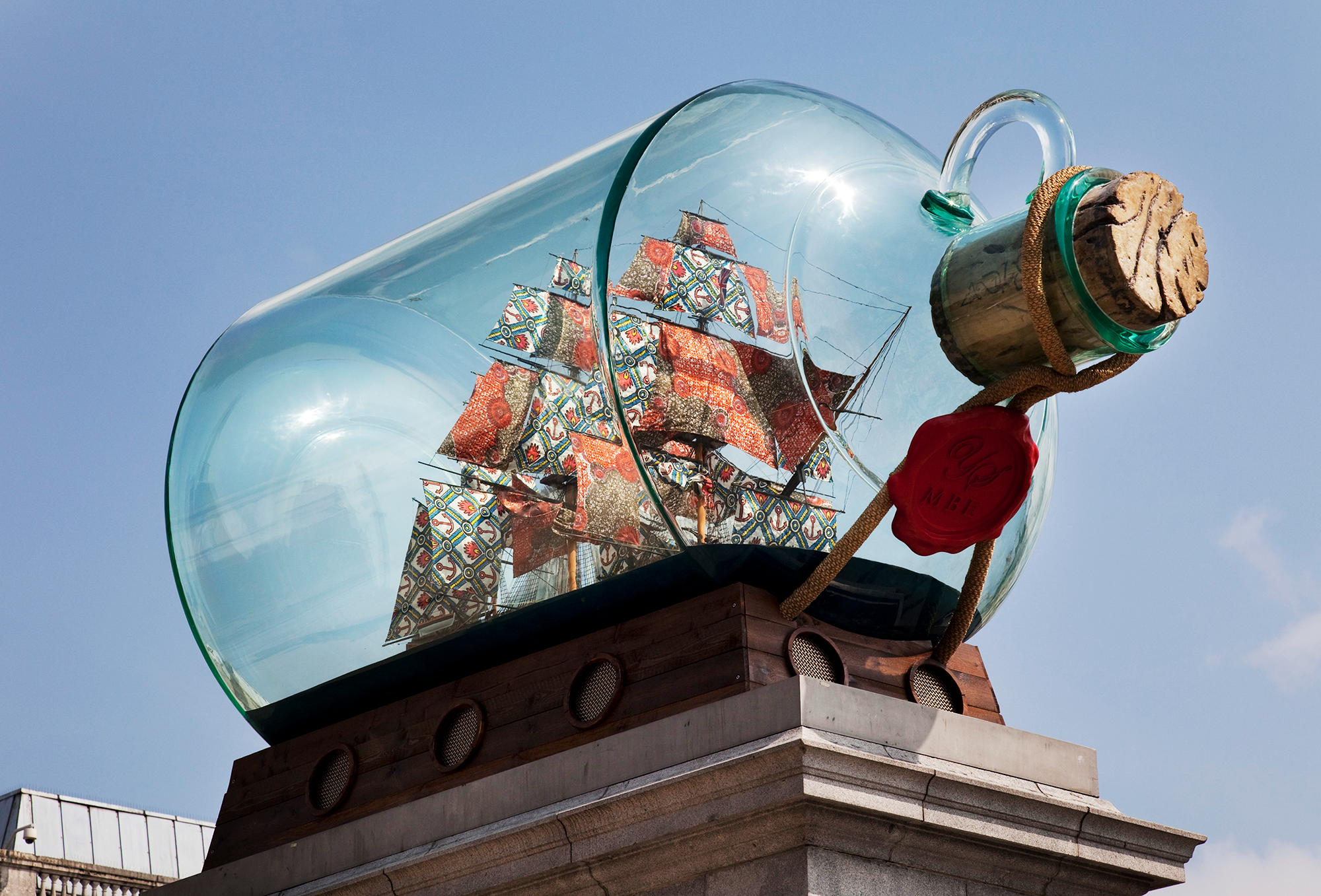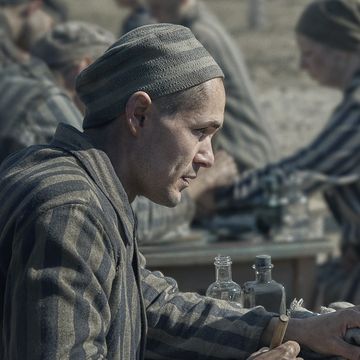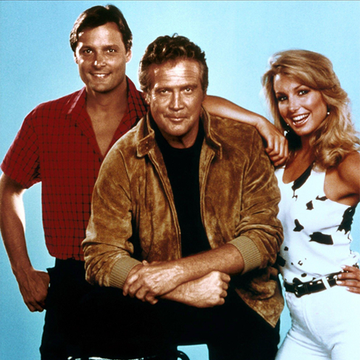On the ground floor of Yinka Shonibare’s east-London studio, two imperious figures from British history have been scaled down to slightly-smaller-than-life size. The statues are painted in bright patterns, an unmistakable signature of the artist’s work. For a moment or two, it makes them unrecognisable. Soon, you realise you are staring down Winston Churchill (the hunch is a give-away) and William Pitt the Younger (this one, admittedly, takes a little prompting from a studio assistant). The British-Nigerian artist, 61, identifies them as “decolonised structures”, inspired by statues of people who have links to an ugly past— the slave trade or colonial administrations, for example — and now watch over London streets.With his reimagined effigies, Shonibare wonders: “Are they being celebrated, because they have all these wonderful colours on them? Are they being improved? Or is this a critique?”
Those will be the questions for visitors to the artist’s exhibition, Suspended States, at Serpentine South, in London, this April. “My work is influenced generally by what’s in the media, and also by the fundamental issues to do with my own identity,” he explains. One room will be dedicated to a selection of the statues, which he began thinking about when the monument of Bristol-born slave trader Edward Colston was toppled in2020, during the global protests that followed the murder of George Floyd. What was Shonibare’s reaction? “A mix of feelings, because on the one hand, I’m not going to support somebody who enslaved a whole lot of people, but then, where do you stop? Do you go to the libraries, start pick-ing up books you don’t like and burning them?”
Another installation, “The War Library”, will build on a past project, “The British Library” at Tate Modern, where thousands of hardback books were covered in Shonibare’s colourful fabrics. On the spines were the names of first- and second-generation immigrants who have contributed toBritish society and culture, from Noel Gallagher to Zadie Smith, as well as opponents of immigration (looking at you, Nigel Farage). In the new work, the titles will revolve around conflict; Shonibare had been thinking about events inUkraine and wars generally: why do we fight? How have we found solutions? Have any peace treaties proven successful? Around 6,000 books exploring those topics will be featured. “I’m not necessarily making a point, I’m not making moral judgements,” says Shonibare, who is both detailed and curious in conversation. “I just want people to see what we’ve done and think about it.”
The drizzly December afternoon on which we meet is brightened by the bundles of the artist’s signature wax-print African cloth neatly folded on shelves around us. Nearby, an assistant is painting its patterns onto a mask. The fabric has complicated origins, as Shonibare discovered when he was browsing Brixton Market as a young man; the stallholders told him that while the designs are inspired by Indonesian batik textiles, they are mostly produced by the Dutch and sold in West Africa. That unexpected history became a helpful conceit for questioning ideas of authenticity, an ongoing issue in his work. A teacher at art school once asked him: “You’re of African origin, why are you not producing authentic African art?” “We’re all just mixing it up,” Shonibare says now. “As a phenomenon of contemporary culture, you’re just free to be from everywhere.”
Shonibare was born in London to Nigerian parents, and moved to Lagos when he was three. The city’s cultural scene had a huge impact, he says, from the rise of the musician and activist Fela Kuti to the festival of Black culture, Festac ’77, which he remembers as a “dynamic cultural event”. Shonibare recalls watching it on TV, seeing Stevie Wonder play, and being particularly struck by the performers who had come to the festival from Brazil: “Some of these people had been enslaved for 400 years or more, but they were singing in African languages, so that meant generations managed to pass them down.” Shonibare would go to art workshops on the weekends as“the arts are quite big in Nigeria”. Did he already know he wanted to be an artist? “Absolutely.”
He returned to England to finish his A-Levels, studying at the now-closed boarding school Redrice in Hampshire. (“It was freezing, of course.”) Shonibare couldn’t wait to be in London, and signed up for an art-foundation course at Wimbledon College of Art; it was here that he contracted a virus of the spinal cord that left him partly paralysed, as a result of which he now uses a wheelchair. A few years later, he attended the Byam Shaw School of Art (since merged into Central Saint Martins College of Art and Design) and then Goldsmiths. He graduated among the cohort known as the Young British Artists, and his work was featured in Sensation, the 1997 industry-storming exhibition of Charles Saatchi’s art collection at the Royal Academy.
In 2004, Shonibare was shortlisted for the Turner Prize, though he is perhaps best known for his 2010 work “Nelson’s Ship in a Bottle”. The scaled-down replica of Nelson’s HMS Victory, which includes 80 cannons and 37 sails (once again reworked with his signature fabric), was bottled and placed temporarily on Trafalgar Square’s fourth plinth; now, after a public campaign to keep it on permanent display, it is outside the Maritime Museum in Greenwich. From those sails came the “Wind Sculpture” series: large-scale fibreglass installations designed to look like wind-buffeted swathes of the African textiles. In 2018, a 23-foot Wind Sculpture was erected in Central Park, taking the place of a statue of 19th-century gynaecologist James Marion Sims, who had performed experimental surgery on enslaved women.
Despite his early determination, not to mention his later success, becoming an artist was an “odd choice” for Shonibare, who says he “constantly argued” with his parents about his career ambitions. (His siblings work in medicine and finance.) What would happen after art school? Who would pay the bills? Their fears were finally assuaged when Shonibare received an invitation to a party at Windsor Castle. “I heard my father, who was a real royalist, on the phone saying to a friend, ‘Of course, I encouraged him to do the MA, and now he’s been invited by the Queen!’”
Given Shonibare’s work often raises questions about imperialism, the artist’s links to the establishment are intriguing. In 2006, he was made a Member of the British Empire. At the time, Shonibare recalls, many artists turned down hon-ours because of the empire’s links to colonialism and slavery. “An artist refusing was becoming a cliché,” he says. “I thought, actually, it’s much more interesting to accept and be visible, because people of African origin have been in the UK for centuries now, and why should you not actually be an outsider inside rather than an outsider out-side?” In 2019, Shonibare’s MBE was upgraded to a CBE. What has he learned from being on the inside for almost two decades? “What I like about it is that it always creates debate,” he says playfully, as reluctant to be pinned down as a wind-blown sail. “Whereas if I had not accepted it, there would be no debate.” ○
“Suspended States” is at Serpentine South from 12 April to 1 September 2024; serpentinegalleries.org
Henry Wong is a senior culture writer at Esquire, working across digital and print. He covers film, television, books, and art for the magazine, and also writes profiles.
